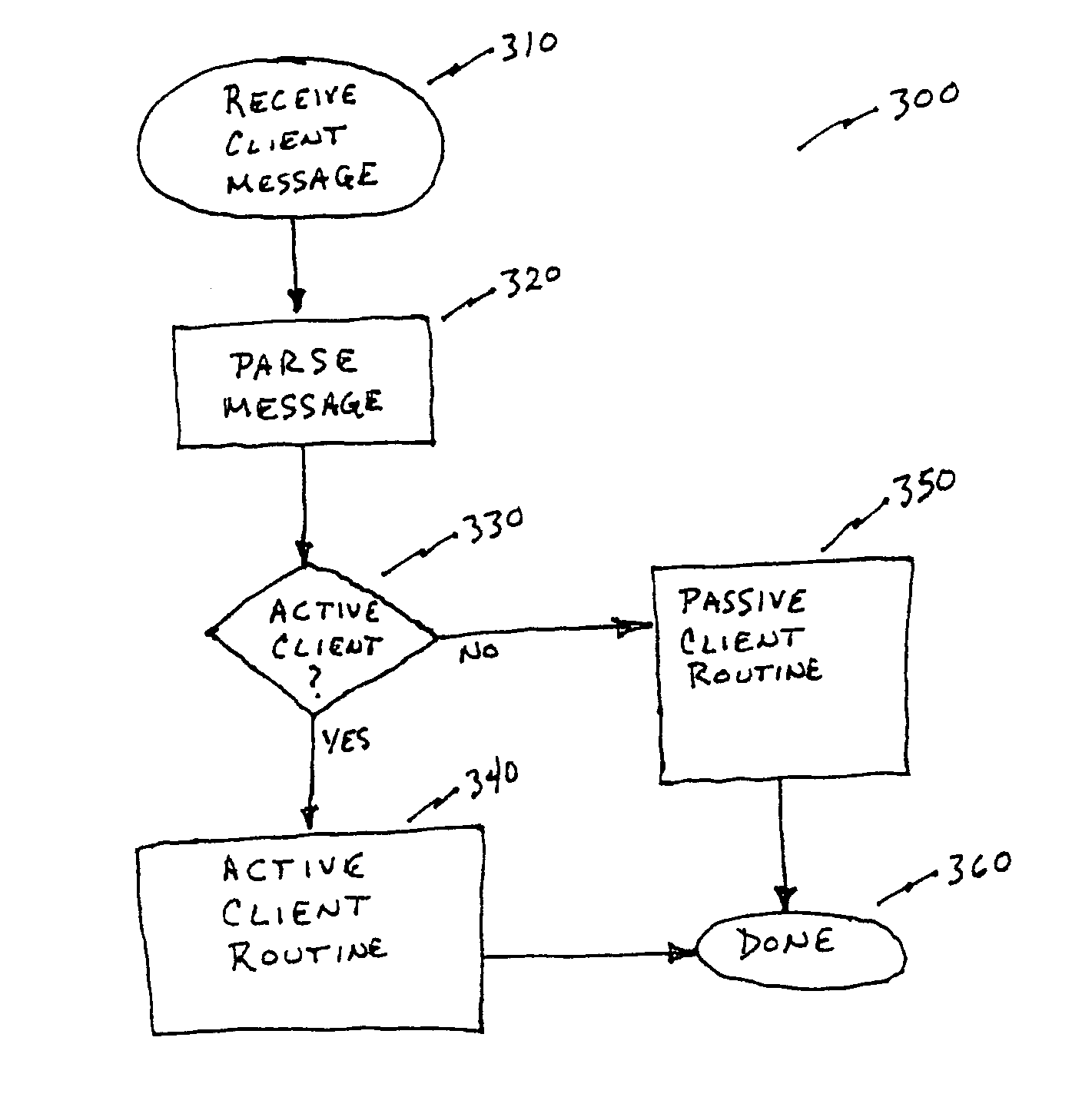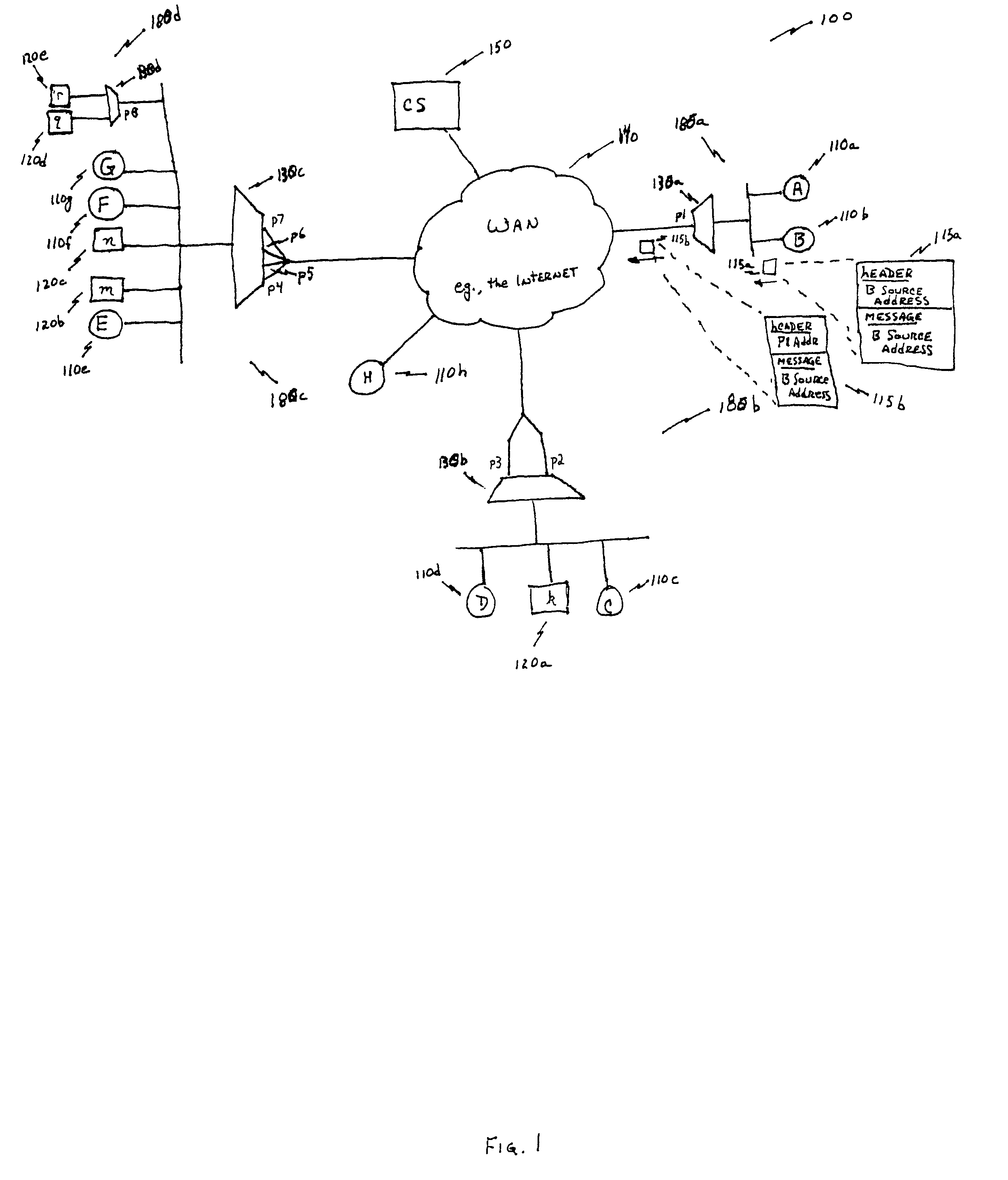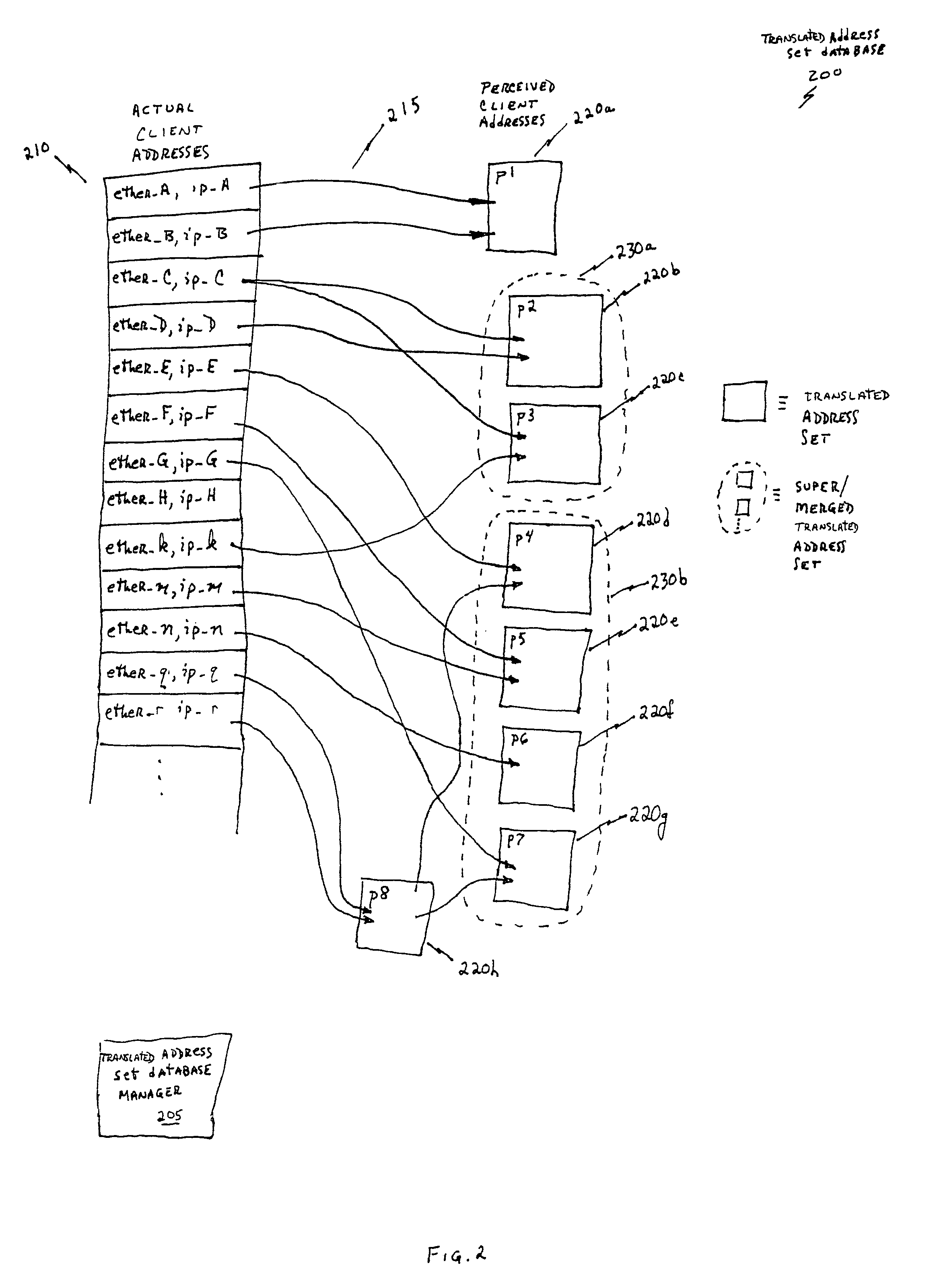Method and apparatus for determining a network topology in the presence of network address translation
a network topology and network address technology, applied in the field of network topology determination in the presence of network address translation, can solve the problems of host server being generally incapable of supporting all clients at real-time video rate, translation devices interfering with the ability to identify devices within the hierarchy, bottlenecks may occur,
- Summary
- Abstract
- Description
- Claims
- Application Information
AI Technical Summary
Benefits of technology
Problems solved by technology
Method used
Image
Examples
Embodiment Construction
[0026]FIG. 1 is a block diagram of a network 100 that includes examples of various network topologies. Included in the network 100 are ATDs (address translation devices) 130a, 130b, 130c, 130d (collectively 130), active clients, which are typically servers A, B, C, . . . H, respectively 110a, 110b, 110c, . . . , 110h (collectively 110), and passive clients l,m,n,q,r, respectively 120a, 120b, 120c, 120d, 120e (collectively 120). The passive devices are sometimes referred to as end-users 120. The network 100 further includes a WAN (Wide Area Network) 140, e.g., the Internet, and CS (Central Server) 150.
[0027]The network 100 includes several subnets 180a, 180b, 180c, and 180d (collectively 180). The servers 110 have so-called “zones of coverage,” where clients within a first server coverage zone get information from a first server, clients within a second server coverage zone get information from a second server, and so on. The servers 110 are usually configured in a hierarchical arran...
PUM
 Login to View More
Login to View More Abstract
Description
Claims
Application Information
 Login to View More
Login to View More - R&D
- Intellectual Property
- Life Sciences
- Materials
- Tech Scout
- Unparalleled Data Quality
- Higher Quality Content
- 60% Fewer Hallucinations
Browse by: Latest US Patents, China's latest patents, Technical Efficacy Thesaurus, Application Domain, Technology Topic, Popular Technical Reports.
© 2025 PatSnap. All rights reserved.Legal|Privacy policy|Modern Slavery Act Transparency Statement|Sitemap|About US| Contact US: help@patsnap.com



